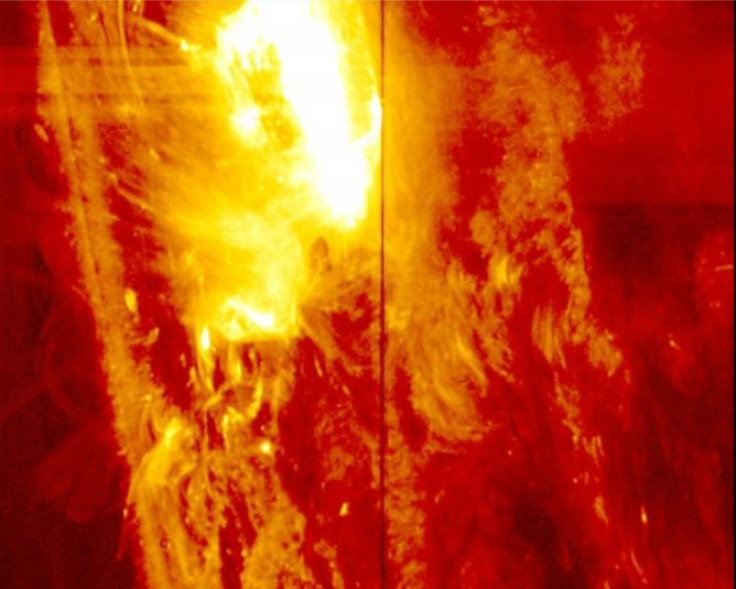NASA's IRIS Witnesses The Largest Solar Flare Since Its Launch Last Year

NASA’s Interface Region Imaging Spectrograph, or IRIS, witnessed a solar flare on Jan. 28, which, according to the space agency, is the strongest one since IRIS was launched in the summer of 2013.
According to scientists, solar flares are bursts of X-rays and light that stream out into space. However, scientists have yet to discover the details of what actually sets them off.
Although IRIS closely examines the layer of the sun's lower atmosphere just above the surface, called the chromosphere, it cannot look at the entire sun at the same time. Because of this limitation, scientists always have to make decisions about what region might provide useful observations.
On Jan. 28, scientists using the IRIS spotted a magnetically active region on the sun and focused the instrument there to see how the solar material behaved under intense magnetic forces. At 2:40 p.m. EST, scientists observed a moderate flare, labeled an M-class flare -- the second-strongest class flare after X-class -- erupted from the area, sending light and X-rays into space.
“IRIS is equipped with an instrument called a spectrograph that can separate out the light it sees into its individual wavelengths, which in turn correlates to material at different temperatures, velocities and densities,” NASA said in a statement.
According to scientists, the spectrograph on IRIS was pointed right into the heart of the flare in question when it reached its peak. Scientists expect the data obtained to help determine how different temperatures of material flow, giving scientists more insight into how flares work.
Earlier this month, scientists used footage collected by IRIS and created a video, which showed a violent region below the surface of the sun glowing. With the help of IRIS images, scientists determined that the interface region of the sun is more violent than expected, and it houses fine fiber-like structures that had not been seen before.
© Copyright IBTimes 2024. All rights reserved.












